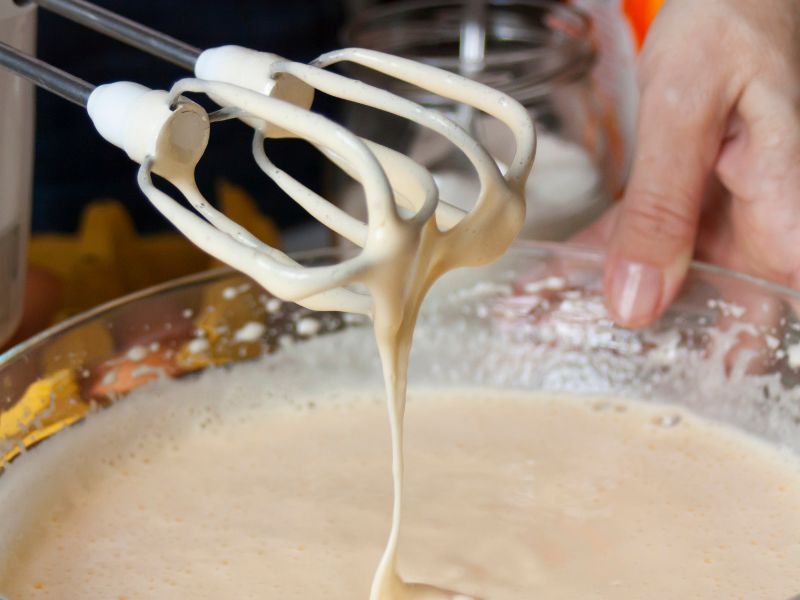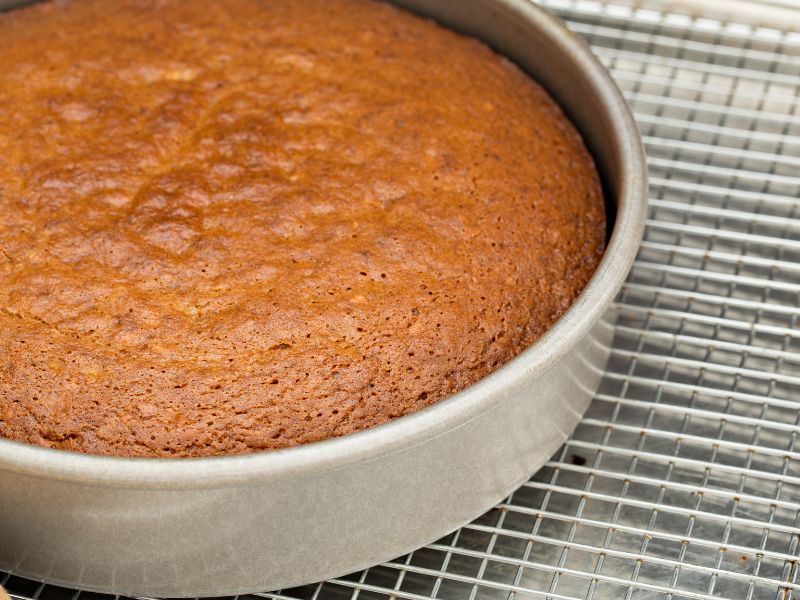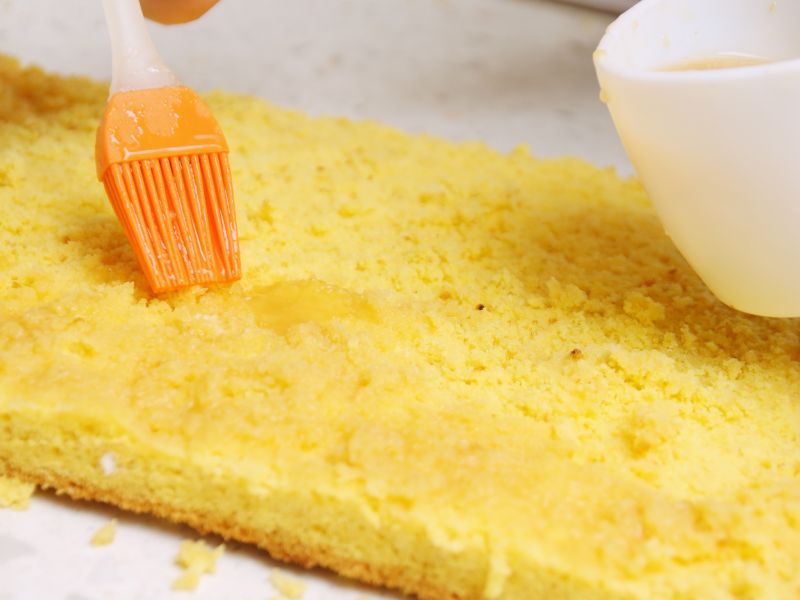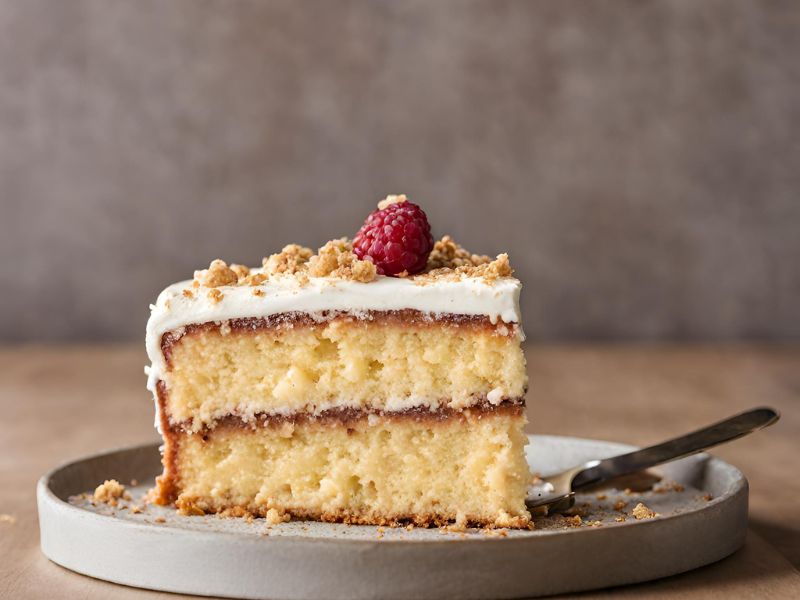Why is my cake dry? This is a common question when it comes to cake baking. After all, baking is more like science. Everything has to be just right to get the right results you are looking for.
Why Is My Cake Dry?
There are many reasons for the question, “Why is my cake dry?” But the main reasons are not using the correct wet-to-dry ingredient ratio, overmixing, baking at the wrong temperature, and, last but not least, overbaking. Let’s explore these reasons just a little closer. Grab a drink, and let’s get to it.
Not Using The Correct Wet To Dry Ingredient Ratio
What exactly does this mean? Recipes are written with the exact amount of an ingredient to get the right end result. So if you use too much of a dry ingredient, such as flour, and not enough of the wet ingredient, such as milk, your cake is going to be dry.
The same can be said if you reverse the above, too little dry and too much wet you will end up with soup. Not a good scenario. You need to read your recipe instructions well. The best practice is to read the recipe thoroughly before even starting. This way, you can be sure that you have the ingredients you need and the right amounts as well.
Many new bakers want to “experiment,” but baking is a science, and the ingredients have to be in the correct measurements. So, this needs to be taken into account when it comes to experimenting. I have had many disasters:)
Overmixing

So you have all the ingredients in your bowl and now the mixing. But you have some ugly lumps in the mixture. Of course, it is our nature to want things perfect, right? So you mix and mix to get rid of those lumps. Wrong thing to do. Curve that impulse to keep mixing.
Most instructions will say, “Mix just until combined”. The more you mix, the more air you are introducing into the batter. This extra air will inflate in the oven during baking and then deflate. A deflated cake is a dense and dry cake.
Another way to avoid overmixing is to make sure that all your ingredients are at room temperature. This will help to incorporate the ingredients more easily. Cold butter is going to make it hard to get it all mixed into the dry ingredients therefore more mixing is required.

Temperature
Most cakes are baked in a 350-degree oven. But this really depends on the type of cake you are baking. For instance, an angel food cake is baked at a lower temperature for a longer baking time. Low and slow, as the saying goes.
The higher the temperature of your oven, the less baking time is needed for your cake. And, of course, the lower the temperature, you will need more baking time.
But not all ovens are equal. The best thing to do is to check your oven temperature with an oven thermometer, and then you can adjust accordingly.

Overbaking
Overbaking your cake will ensure that the cake is going to be dry. And as I stated earlier, not all ovens are equal when it comes to temperature. I found that my oven bakes just a little faster, so I have to start checking my cake a little sooner than the recipe states.
So to ensure that you don’t overbake your cake, the best practice is to start checking for doneness at least 5 minutes before the end of the baking time stated in the recipe.
The two most popular ways to check for doneness are: 1. the toothpick. Insert a toothpick into the center of your cake, and if it comes out clean, you are good to go. And 2. Press lightly down on the top of the cake, and if it springs back, it is done. If you leave an impression, it needs more time to bake.
How To Add Moisture To Your Cake

So your cake is dry. No need to throw out all that hard work. Use a simple syrup to add moisture to your cake.
Simple Syrup
Simple syrup is actually just that. Take equal amounts of liquid and sugar, mix well, and heat in a small saucepan until the sugar has dissolved. (For example, 1 cup of water and 1 cup of sugar). Set aside to cool.
Poke small holes into the top of your cake, and when the simple syrup has cooled, take a pastry brush and brush the simple syrup onto the top of your cake.
Storing Your Cake
Storing your cake is just as important as the actual baking of it. Let your cake cool completely before storing it.
Place your cake under a cake cover or large bowl.
For unfrosted cakes, wrap in plastic wrap followed by aluminum foil. Store cupcakes in an airtight container.
Although you may have your cake wrapped tightly, try to avoid storing it in the refrigerator for more than 2 days. Cakes with fillings or frostings that contain dairy products need to be refrigerated. More than likely, the cake will be eaten before the 2 days are up.
To store a frosted cake in the fridge, chill it uncovered for 15 minutes, this will allow the frosting to harden up a bit, then cover with plastic wrap and return to the fridge.
Before serving, set the cake on the counter for 30 minutes.
Final Thoughts
No one wants a dry cake. To avoid this mishap remember to read the recipe thoroughly before starting to make sure you have all the necessary ingredients as well as the correct amounts to avoid not using the correct wet-to-dry ingredient ratio.
When it comes to mixing, please don’t overmix. Mix just until combined and all your dry ingredients are mixed in.
Make sure that you are baking at the correct temperature. If you are not sure about your oven temperature, check it with an oven thermometer.
Start checking your cake at least 5-6 minutes before the end of the cooking time. Don’t want to overbake. Use a toothpick or your hand.
You can add moisture to a dry cake by using a simple syrup. And storing that cake properly is just as important as the mixing and baking portion.
Please leave me a comment below with your thoughts and experiences with dry cake.
And As Always
Keep On Baking!
Taianne
Share the Love!

I’m Taianne, the owner and operator behind We Are Baking. Baking my first cake at age 11 hooked me on creating sweet treats. Though my interest faded during childhood, it was rekindled when I married my apple pie-loving husband. I love trying new recipes, tweaking classics, and helping others learn the science and art of baking. I started We Are Baking to share tips, tricks, and favorite recipes I’ve discovered over the years. When not in the kitchen, I enjoy spending time with family and friends. My goal is to inspire others to embrace their creativity through baking. Feel free to contact me with any questions!
Taianne@wearebaking.com

